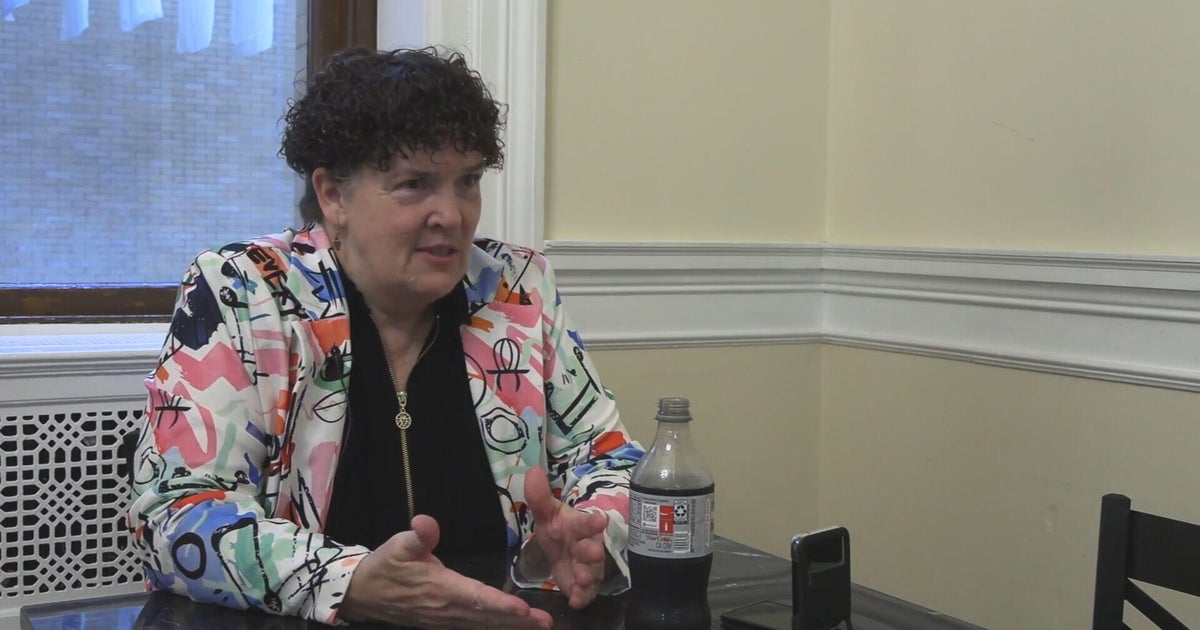Health
CDC’s comments on today’s pneumonia outbreaks vs. the early COVID cases, as compared by experts

Pediatric pneumonia outbreaks in multiple countries have some doctors and families concerned — but statements from public health agencies suggest there’s no cause for alarm. This is similar to their initial reactions to the COVID-19 pandemic, many are saying.
Hospitals in China have reportedly been “overwhelmed with sick children” as a result of the pneumonia outbreak, according to ProMED, the global digital disease surveillance system.
Also, the Netherlands Institute for Health Services Research (NIVEL) has reported a surge in cases — as have some U.S. states, including Ohio and Massachusetts.
AMID CHILDHOOD PNEUMONIA OUTBREAKS, INFECTIOUS DISEASES EXPERT REVEALS KEY FACTS ABOUT ‘WHITE LUNG SYNDROME’
The Centers for Disease Control and Prevention (CDC) on Dec. 1 sent the following statement to Fox News medical contributor Dr. Marc Siegel: “As of today, the CDC is not seeing anything out of the ordinary related to levels of mycoplasma across the country, but we are watching it closely.”
On its website, the agency stated that it is “monitoring reports of increased respiratory illness around the world,” and that “diagnosis of pneumonia in children, along with other respiratory illnesses, increases every year in the fall and winter months.”
Pediatric pneumonia outbreaks in multiple countries have some doctors and families concerned — but statements from public health agencies suggest there is no cause for alarm. (iStock)
The agency also noted that the number of children seeking emergency care for diagnosed pneumonia is “largely consistent with previous years” for children aged 0 to 4 years, with “slight increases above typical levels” for children aged 5 to 17.
CHILDHOOD PNEUMONIA SURGE REPORTED IN NETHERLANDS AMID OUTBREAK IN CHINA
“These increases are likely caused by viruses and bacteria [that] we expect to see during the respiratory illness season,” the CDC said.
The World Health Organization (WHO), too, has chalked up the outbreaks to known respiratory diseases rather than novel viruses.
“As of now, at the present time, Chinese surveillance and hospital systems report that the clinical manifestations are caused by known pathogens in circulation,” WHO said on its website.
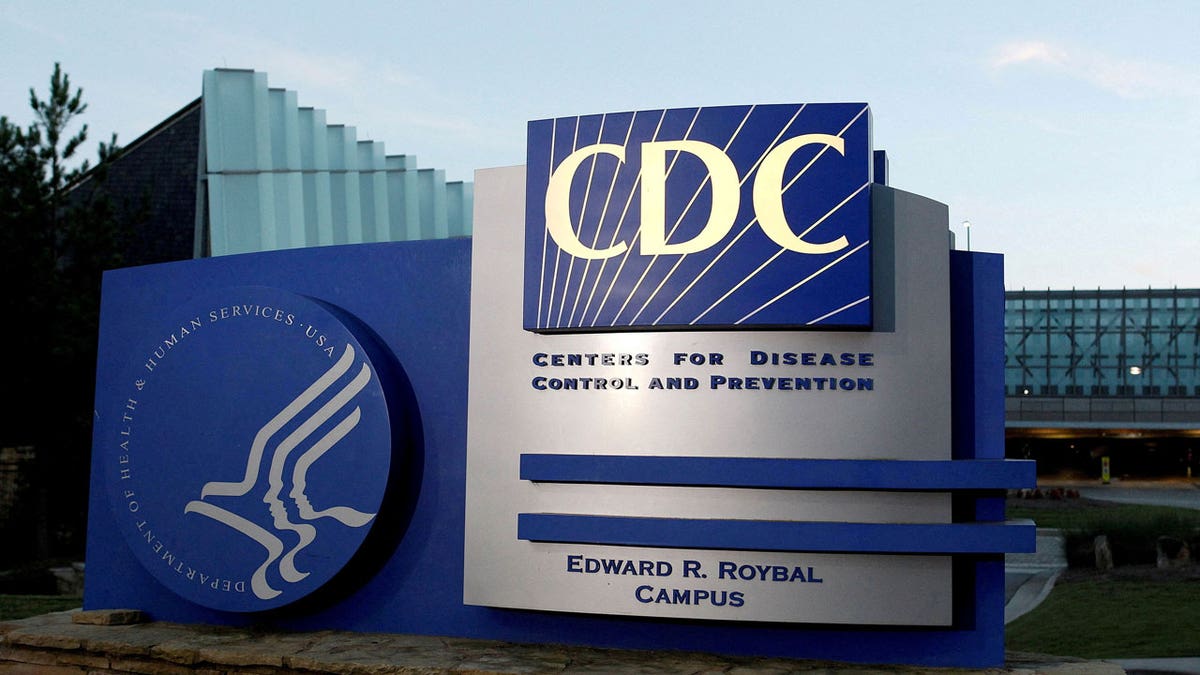
“These increases are likely caused by viruses and bacteria we expect to see during the respiratory illness season,” the CDC stated on its website. (REUTERS/Tami Chappell)
“Mycoplasma pneumoniae is a common respiratory pathogen and a common cause of pediatric pneumonia, and is readily treated with antibiotics,” the agency also said.
“Due to the arrival of the winter season, the increasing trend in respiratory illnesses is expected; co-circulation of respiratory viruses may increase the burden on health care facilities,” it added.
With the current childhood pneumonia outbreak in China, Siegel said that both the CDC and WHO have been “upfront asserting that it is not a new pathogen.”

Fox News medical contributor Dr. Marc Siegel weighed in on the CDC’s reactions to COVID in 2020 — and to the reactions today to pneumonia in 2023. (Fox News)
“There is less of a sense of suppressing information, and the high incidence of resistant mycoplasma infection associated with the outbreak has also been clear,” he went on.
“The CDC has also done a good job of tracking cases here, and asserting that there is no connection and that the incidence of mycoplasma has not increased,” said Siegel. “They are monitoring the situation very closely, which appears to be a real improvement over early 2020.”
Comparison to COVID reactions
The health agencies’ reactions to the current pneumonia outbreaks in late 2023 have been compared to the agencies’ initial reactions to the COVID-19 virus in 2020.
“The CDC is our microbiologic liaison to the world. It is our surveillance system. It is our eyes and ears.”
In testimony to Congress on Feb. 27, 2020, then-CDC director Dr. Robert Redfield stated that “most cases of COVID-19 in the United States have been associated with travel from China, but some person-to-person spread among close contacts of travelers has been seen.”
CHILDHOOD PNEUMONIA OUTBREAK IS REPORTED IN SOUTHWESTERN OHIO: ‘LARGE UPTICK’
He also said, “It’s important to note that this virus is not spreading within American communities at this time.”
He went on, “The potential global public health threat posed by this virus is high, but right now, the immediate risk to most Americans is low. The greater risk is for people who have recently traveled to China or been exposed to someone with COVID-19.”
Dr. Brett Osborn, a Florida neurosurgeon and longevity expert, noted that in the early days of the COVID-19 pandemic, before the virus entered the U.S., “the CDC was relatively close-lipped about its specific details.”

Dr. Brett Osborn, a Florida neurosurgeon and longevity expert, noted that in the early days of the COVID-19 pandemic before the virus entered the U.S., “the CDC was relatively close-lipped about its specific details.” (Dr. Brett Osborn)
“To mitigate the risk of a similar occurrence — and the United States again being caught off-guard — Congress submitted a battery of questions to the CDC demanding answers about the recent pneumonia outbreak in China,” Osborn told Fox News Digital. “The agency has yet to respond.”
“It is widely known that China thwarted international efforts, including efforts by the CDC, to respond to the burgeoning COVID-19 crisis as it began to unfold in China.”
In a Nov. 29 letter from the U.S. Committee on Energy and Commerce to Centers for Disease Control and Prevention director Mandy Cohen, committee chairs wrote the following: “The Centers for Disease Control and Protection’s (CDC) failure to communicate accurate information in real-time during the COVID-19 pandemic has undermined public trust in the agency. If the CDC is to regain credibility with the American people, it must be transparent and forthcoming with the information it has on public health threats facing our nation.”
CLICK HERE TO SIGN UP FOR OUR HEALTH NEWSLETTER
“It is widely known that China thwarted international efforts, including efforts by the CDC, to respond to the burgeoning COVID-19 crisis as it began to unfold in China.”
“It would be an abdication of the CDC’s duty to the American people if it allows China to repeat its misdeeds from the COVID-19 pandemic. The American people should not have to rely on the unaccountable and untrustworthy WHO to communicate information about Chinese public health threats.”
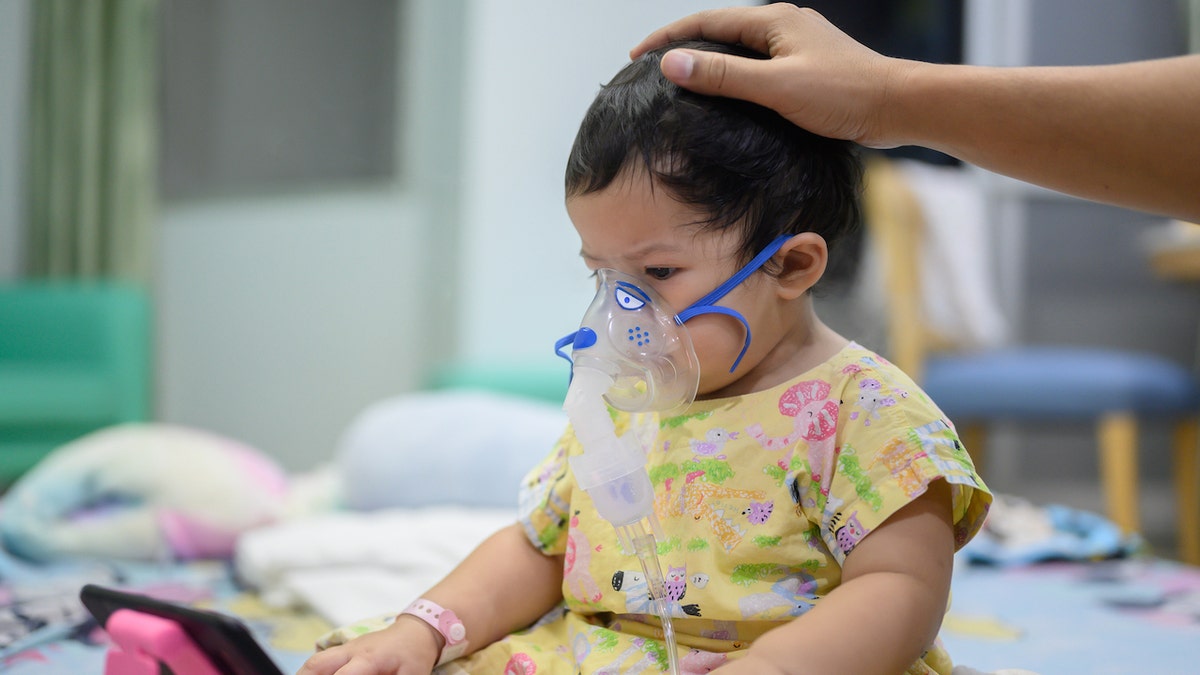
Hospitals in China have reportedly been “overwhelmed with sick children” as a result of today’s pneumonia outbreak, according to ProMED, the global digital disease surveillance system. (iStock)
Siegel pointed out that with COVID, “the CDC was caught flat-footed, in large part because China was suppressing crucial public health information and CDC was not allowed to have ‘boots on the ground’ to investigate, which they repeatedly requested through CDC Director Robert Redfield.”
He also said, “They did post the structure of the virus online early, but little else.”
Adding to the problem, Siegel noted, was that the World Health Organization (WHO) called COVID a “regional problem only.”
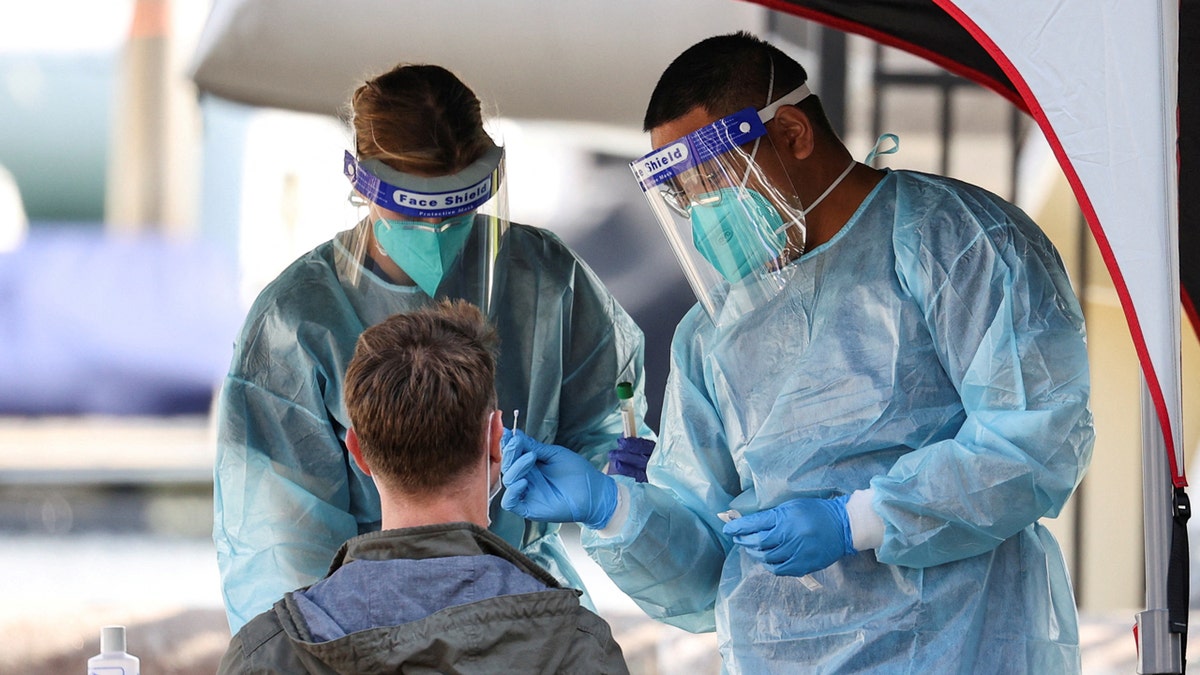
Medical personnel administer tests for the coronavirus disease (COVID-19) at a pop-up testing center in Sydney, Australia, on July 30, 2020. (REUTERS/Loren Elliott/File Photo)
While preliminary data suggest that the pneumonia outbreaks are caused by known viruses — including RSV, mycoplasma and other common cold viruses — doctors and health authorities are calling for definitive answers.
“The CDC must drill down on the specifics and apply political pressure on China to best prepare the United States for another potential pandemic,” said Osborn. “Early warning is critical.”
“The CDC is our microbiologic liaison to the world. It is our surveillance system. It is our eyes and ears,” he went on.
“We are reliant on its liability to protect the nation through extreme transparency.”
As Osborn pointed out, “It is always best to err on the side of caution and alert the nation early of a potential problem, or else risk another COVID-19.”
Fox News Digital reached out to the CDC for comment.
For more Health articles, visit www.foxnews/health.

Health
Is Okra Nature’s Ozempic? Learn the Truth About This Weight Loss Hack

Use left and right arrow keys to navigate between menu items.
Use escape to exit the menu.
Sign Up
Create a free account to access exclusive content, play games, solve puzzles, test your pop-culture knowledge and receive special offers.
Already have an account? Login
Health
Two cancer drugs show promise in reversing Alzheimer's devastating effects

NEWYou can now listen to Fox News articles!
Two cancer drugs could potentially slow or even reverse the effects of Alzheimer’s disease, a new study suggests.
Researchers at the University of California San Francisco (UCSF) explored how the common dementia changes gene expression (which genes are turned on or off) in certain brain cells, according to a press release from the university.
Next, they looked at which existing FDA-approved drugs might counteract, or reverse, those changes.
ALZHEIMER’S RISK COULD RISE WITH SPECIFIC SLEEP PATTERN, EXPERTS WARN
In analyzing millions of electronic medical records of adults over 65, the researchers identified two medications that appeared to reduce the likelihood of Alzheimer’s in the patients who took them.
The medications — letrozone and irinotecan — are both approved to treat cancer. Letrozole is a breast cancer medication and irinotecan treats colon and lung cancer.
When the scientists tested a combination of both medications in mice, they noted a reversal of the gene expression changes that were initiated by Alzheimer’s.
Two cancer drugs could potentially slow or even reverse the effects of Alzheimer’s disease, a new study suggests. (iStock)
They also discovered a reduction in tau protein clumps in the brain — a key marker of Alzheimer’s — and an improvement in learning and memory.
“Alzheimer’s disease comes with complex changes to the brain, which has made it tough to study and treat, but our computational tools opened up the possibility of tackling the complexity directly,” said co-senior author Marina Sirota, PhD, the interim director of the UCSF Bakar Computational Health Sciences Institute and professor of pediatrics, in the press release.
EATING THESE COMMON FOODS COULD REDUCE ALZHEIMER’S RISK, EXPERTS SAY
“We’re excited that our computational approach led us to a potential combination therapy for Alzheimer’s based on existing FDA-approved medications.”
The results of the study, which was funded in part by the National Institutes of Health (NIH) and the National Science Foundation, were published in the journal Cell on July 21.

In analyzing millions of electronic medical records of adults over 65, the researchers identified two medications that appeared to reduce the likelihood of Alzheimer’s in the patients who took them. (iStock)
While the study’s outcome was promising, the researchers acknowledged several limitations, including the fact that the database they used to identify possible drugs was built from cancer cells, not brain cells.
They also noted that animal models were used.
“Although necessary, validation in animal models may not fully recapitulate human biology,” the researchers wrote.
MEN FACE DOUBLE DEMENTIA RISK IF THEY HAVE A HIDDEN GENETIC MUTATION
There was also a noticeable gender difference in response to the medications, with male mice responding better than females.
“As a hormone modulator, letrozole might contribute to this sex difference,” the team noted. “However, the analysis remains inconclusive due to the small number of male letrozole users.”
The electronic medical records could also present limitations, “as data tend to be sparse and are not collected with specific research in mind.”
“We’re hopeful this can be swiftly translated into a real solution for millions of patients with Alzheimer’s.”
More than seven million people in the U.S. are currently living with Alzheimer’s, according to the Alzheimer’s Association.
This number is expected to approach 13 million by the year 2050.

More than seven million people in the U.S. are currently living with Alzheimer’s, according to the Alzheimer’s Association. (iStock)
There are currently only two disease-modifying medications that have been FDA-approved to treat Alzheimer’s, UCSF states.
Lecanemab (Leqembi) and donanemab (Kisunla) are both monoclonal antibodies that are administered via IV infusions.
They work by reducing the build-up of amyloid plaques in the brain, but they are only effective for those with early-stage Alzheimer’s and have the potential for some serious side effects, according to experts.
(Other Alzheimer’s medications help with symptoms, but don’t treat the underlying disease.)
CLICK HERE TO SIGN UP FOR OUR HEALTH NEWSLETTER
“Alzheimer’s is likely the result of numerous alterations in many genes and proteins that, together, disrupt brain health,” said co-senior study author Yadong Huang, M.D., PhD, professor of neurology and pathology at UCSF, in the release.
“This makes it very challenging for drug development — which traditionally produces one drug for a single gene or protein that drives disease.”
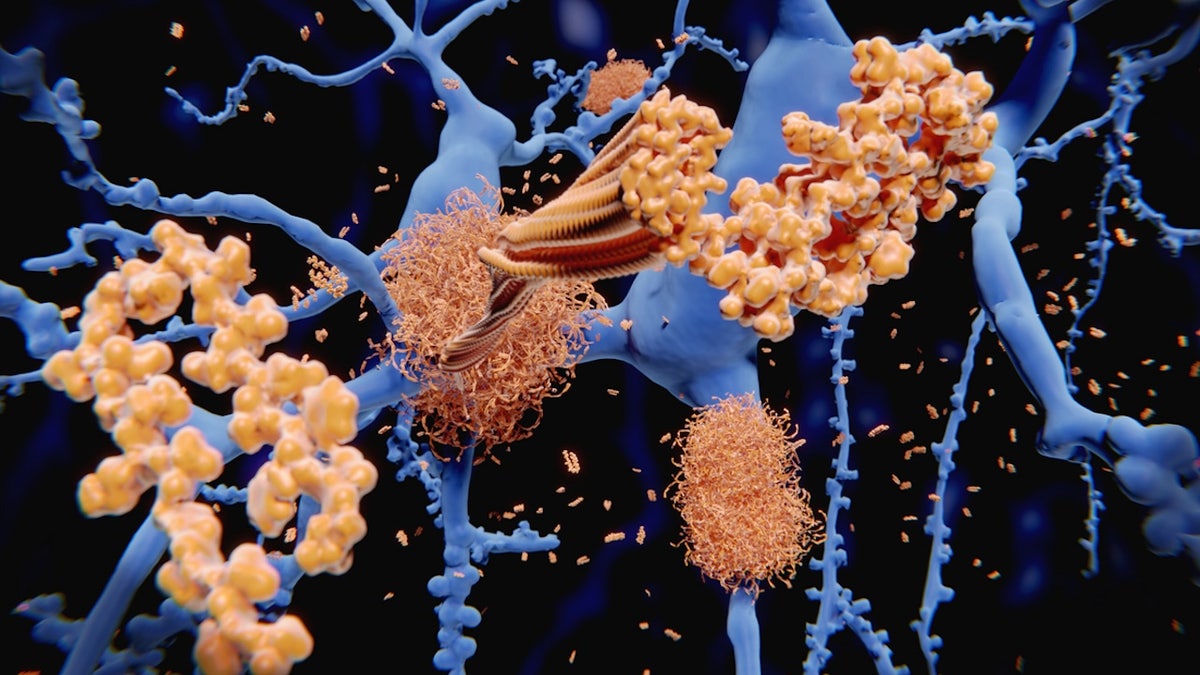
Existing Alzheimer’s drugs work by reducing the build-up of amyloid plaques in the brain, but they are only effective for those with early-stage disease. (iStock)
Looking ahead, the researchers plan to start a clinical trial to explore the combined drugs’ impact on human patients with Alzheimer’s.
“If completely independent data sources, such as single-cell expression data and clinical records, guide us to the same pathways and the same drugs, and then resolve Alzheimer’s in a genetic model, then maybe we’re onto something,” Sirota said in the release.
For more Health articles, visit www.foxnews.com/health
“We’re hopeful this can be swiftly translated into a real solution for millions of patients with Alzheimer’s.”
Health
Video: How the Organ Donation System Let These Patients Down

Under pressure from the federal government to increase organ transplants, hospitals and organ procurement organizations across the country are rushing people toward donation, and some patients have been harmed. Brian M. Rosenthal explains how and where this is happening.
-

 Health1 week ago
Health1 week agoNew weekly injection for Parkinson's could replace daily pill for millions, study suggests
-

 Politics1 week ago
Politics1 week agoConstitutional scholar uses Biden autopen to flip Dems’ ‘democracy’ script against them: ‘Scandal’
-

 Sports1 week ago
Sports1 week agoEx-MLB pitcher Dan Serafini found guilty of murdering father-in-law
-

 Business1 week ago
Business1 week agoShould You Get a Heat Pump? Take Our 2-Question Quiz.
-

 News1 week ago
News1 week agoSCOTUS allows dismantling of Education Dept. And, Trump threatens Russia with tariffs
-

 Health1 week ago
Health1 week agoJohn Goodman, 72, Says His 200-Lb. Weight Loss Helps Him ‘Live Life Better’
-

 News1 week ago
News1 week agoMike Johnson calls for Epstein files and ICE memos gives deportation guidance: Morning Rundown
-

 Politics1 week ago
Politics1 week agoSpeaker Johnson reveals Musk left MAGA ally's lengthy text hanging in 'the ether' after Trump blowup




